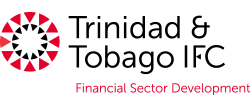Financial Inclusion: Going Beyond Account Ownership
By TTIFC, Staff Writer, October 2021
One of the core mandates of the Trinidad and Tobago International Financial Center (TTIFC) is to facilitate and advance financial inclusion, where needed in key segments of society. The aim is to establish the nation as one of the most financially inclusive economies in the region, to improve quality of life and the ease of doing business. To achieve this, greater access to and uptake of formal financial services such as deposits, savings, insurance and credit, are necessary.
Account Ownership & Financial Inclusion
Account ownership has been positively linked to financial inclusion. Studies have shown that as the percentage of individuals in possession of an account with a financial institution increases, an economy is deemed more financially inclusive (Nguyen, 2020). However, it is argued that account ownership does not detail whether the owners are actively utilising the financial services available to them (Prabhakar et al., 2016). For instance, an individual can own a bank account with a local commercial bank and simply deposit the bare minimum to keep the account open. As of 2017, the data showed that there are many dormant accounts in Trinidad and Tobago. Despite there being 81% bank ownership in Trinidad and Tobago, 19% of these accounts were inactive as there were no withdrawals or deposits (Global Findex Database, 2017).

Strategies To Increase Account Ownership & Engagement
Many entities including government agencies, Central Banks, the World Bank and IMF have been charged with developing strategies aimed at increasing bank account ownership as well as the usage of formal financial services. Financial Literacy initiatives such as the National Financial Literacy Programme (NFLP) of the Central Bank of Trinidad and Tobago (CBTT) have been employed to educate the public on making sound financial decisions and achieving individual financial wellbeing. Through such initiatives persons learn about the benefits of using the formal financial sector, as well as debt management, budgeting and financial fraud. Individuals are also informed of the risks of the informal financial sector, so they are less susceptible to scams, robberies or attaining counterfeit money. This information provides individuals with the knowledge necessary to move away from the informal financial sector, as they will now be less likely to place their money under the mattress, use friends and family for financial services, or ‘rotating saving schemes’ (sou sou).
The financial sector is also embarking on strategies to expand its reach and increase the uptake of its services. Personalised services are being offered to potential customers. For example, business owners are offered supply chain financing to pay their debtors on time, while insurance and savings bundles are being offered to families (EY, 2017). To ensure that account owners make the most of formal financial services, bank and non-bank entities are also improving their services to facilitate easier and safer access to funds through cheque, debit card, credit card, online banking and mobile wallets. These services also remove the need for in-branch visits.
Moreover, technological and legislative expansion are being echoed by agencies such as the TTIFC who continue the call for the further development of the Financial Services Sector and adoption of Financial Technology (FinTech) within the country. The E-Money Issuer Order, which came into effect on August 4, 2020, was welcomed by the TTIFC as it allowed for a more enabling environment for FinTech integration. Under this Order, the CBTT can grant permission for entities other than banks to issue e-money. As the market expands, new financial products and services will be available to meet the needs of FinTech end users.
The TTIFC also continues to be a driver of the digitalisation of payments across the government to provide convenient payment delivery options and promote financial inclusion within Trinidad and Tobago.
References:
EY (2017). Innovation and Financial Inclusion: Revenue Growth through Innovative Inclusion. [pdf]
Global Findex Database (2017). Account Ownership and Usage.
Nguyen (2020). Measuring financial inclusion: a composite FI index for the developing country. Journal of Economics and Development, 22(1), p. 77-99
Prabhakar, N., Anard, B., & Satyanarayana, R. (2016). Determinants of Financial Inclusion: Evidence from Account Ownership and Use of Banking Services. Journal of Entrepreneurship and Development Studies, 4(2), p. 141-155.
The Central Bank of Trinidad and Tobago. The National Literacy Programme. Available at: http://www.nflp.org.tt/page22.html
The Central Bank of Trinidad and Tobago. E-money Policy. Available at: https://www.central-bank.org.tt/fintech/fintech-entities
